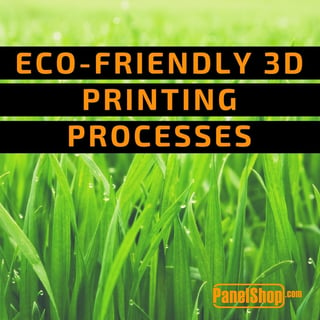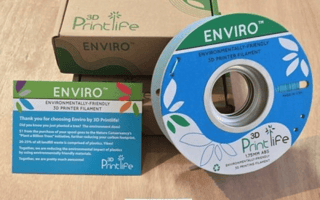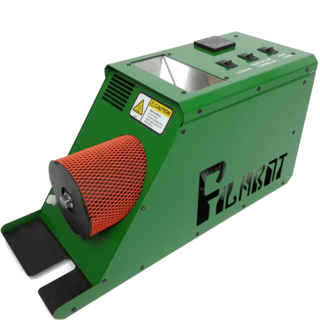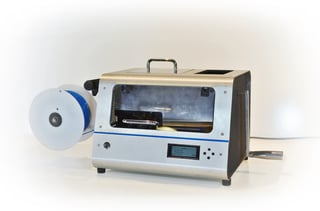 Now that 3D printing has anchored itself in society as a popular and relatively cheap method of producing personalizable parts and prototypes, innovators have begun to look for ways to improve the process itself. Along with this, concerns have arisen regarding the potential waste plastic that ends up in landfills after printing. So with 3D printing established, innovators are turning their creative ideas into environmentally-conscious products for the industry.
Now that 3D printing has anchored itself in society as a popular and relatively cheap method of producing personalizable parts and prototypes, innovators have begun to look for ways to improve the process itself. Along with this, concerns have arisen regarding the potential waste plastic that ends up in landfills after printing. So with 3D printing established, innovators are turning their creative ideas into environmentally-conscious products for the industry.
Over the years, there has been a lot of pressure on the manufacturing industry as a whole to become greener. Although the “green” buzzword is sometimes meaningless, it’s making a big impact in factories and assembly lines, where the engineers are trying to make the processes greener. For machine builders and systems designers, the first place to look is energy efficiency and waste production. Limit those, and your environmental footprint shrinks, and a lot of pressure is being put on that area of manufacturing.
Although most government regulations like the Clean Air Act and its amendments apply more to automotive and other engine production manufacturers, it’s influence has spurred the public to call for manufacturers to modernize their plants and production methods to fit in with this “green” philosophy, and 3D printing is just the next industry to be effected.
Environmentally Friendly Filaments
Some companies are looking for ways to make biofriendly plastic filament for users to purchase for their home machines. One company, 3DPrintLife, has engineered a type of ABS plastic that claims to biodegrade in landfills. Enviro (Figure 1 below) has additives that attract the bacteria leachate, which starts to break down the plastic.

Figure 1: 3DPrintLife’s Enviro, biodegradable printer filament
Another option is a product line from C2Renew and 3DOM USA, who produced a line of filaments made from coffee grinds, beer production byproducts, and hemp fibers. Each of them has a natural color of that ingredient, however (i.e. different shades of brown). The textures can be a little different, but hey, you’re helping the environment.
Re-using the End Product
On the other end of the spectrum, some inventors are designing machines to reuse plastic and form it into new filament. This comes from the ideology that if you can reuse plastic parts and print new filament, you don’t have to spend as much money on expensive store-bought filament.

Figure 2: The Original Filabot
One machine debuted at Maker Faire 2015: the Filabot. This machine is one of the recent developments in desktop filament extruders, developed by Filabot, Inc. It takes plastic pellets, melts them down, and extrudes it into a filament that you can then put on a spool and feed into your printer.
Another extruder invention comes from three engineering physics students at the University of British Columbia. The ProtoCycler is similar to the Filabot in that it extrudes filament into a spool, but it also has a built-in grinder for shredding up failed prints and other scrap plastic. In theory, you could use plastic bottles and other excess pieces to make your own filament for free.

Figure 3: First Generation ProtoCycler
Change is Coming
From environmentally friendly filaments to recycling robots, the world of 3D printing is changing. Now that it is an established market, innovators are looking for ways to change the process that has worked its way into businesses and homes across the world. Now, new machines and processes are changing the way 3D printing uses filament, with recycling and environmentally-friendly alternatives to use in place of expensive store-bought spools.





